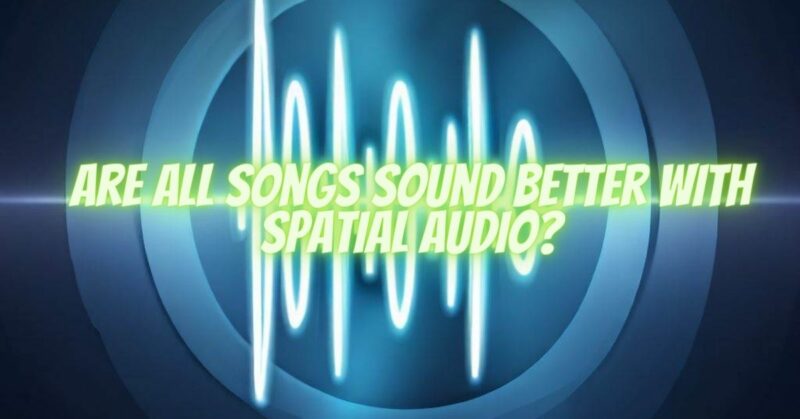Imagine a world where music takes on a new dimension, where sounds swirl around you and immerse you in an ethereal sonic landscape. This is the promise of spatial audio, a technology that aims to revolutionize the way we experience music. But does it truly enhance every song in our vast musical library? In this article, we’ll delve into the captivating realm of spatial audio and explore its effects on the music we love.
The Allure of Spatial Audio:
- A Three-Dimensional Soundscape: Spatial audio brings depth and dimension to music, creating a multidimensional sonic experience. By utilizing advanced audio algorithms and techniques, spatial audio mimics the way sound behaves in a real-world environment. It adds a sense of space, allowing instruments and vocals to occupy specific locations within a virtual 3D soundstage. This immersive quality can transport listeners to the heart of the music, enveloping them in a rich and dynamic sonic environment.
- Enhanced Musical Detail: Spatial audio not only expands the soundstage but also enhances the clarity and detail of individual elements within a song. Instruments and vocals gain a new level of separation, making it easier to distinguish subtle nuances and intricacies that may have been less pronounced in traditional stereo recordings. This heightened level of detail can deepen our appreciation for the artistry and craftsmanship behind each composition.
- Engaging Surround Sound Experience: One of the key features of spatial audio is its ability to create a surround sound-like experience using regular headphones or speakers. This means that listeners can enjoy a captivating sense of immersion without the need for a dedicated multi-channel speaker setup. The music seems to envelop the listener from all directions, allowing for a more engaging and enveloping listening experience.
Considerations to Keep in Mind:
- Song Production and Mixing: While spatial audio has the potential to enhance many songs, its impact may vary depending on how the music was originally produced and mixed. Spatial audio technology works best when the song’s production embraces its capabilities, with deliberate placement and positioning of instruments and vocals within the virtual soundstage. Songs that were not specifically mixed for spatial audio may still benefit from the enhanced detail and clarity but may not deliver the same immersive experience as songs designed with spatial audio in mind.
- Personal Listening Preferences: Like any audio technology, the appeal of spatial audio is subjective. While some listeners may revel in the immersive qualities it offers, others may prefer the simplicity and familiarity of traditional stereo recordings. It’s important to consider personal taste and preferences when assessing the impact of spatial audio on one’s listening experience.
- Compatibility and Availability: Spatial audio is still relatively new, and not all songs are available in this format. Additionally, the availability of spatial audio may vary depending on the streaming platform or playback device used. It’s essential to ensure that your streaming service and playback equipment support spatial audio before diving into this sonic adventure.
In conclusion, spatial audio has the potential to transform the way we perceive and enjoy music. It offers an immersive and engaging listening experience, unveiling new dimensions of our favorite songs. However, its impact may depend on factors such as the song’s production, personal preferences, and compatibility. Whether every song sounds better with spatial audio is subjective, but it undoubtedly adds a new layer of depth and immersion to many musical compositions.
So, explore the captivating world of spatial audio and let your favorite songs transport you to new realms of sonic bliss. Immerse yourself in the magic and marvel at the possibilities as music takes on a whole new dimension.


